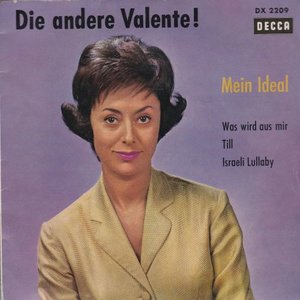

Each line of lyrics is followed by the same line done scat. To show that she has lost little of her power and none of her phrasing and still keeps the pitch, Valente does "With a Song in My Heart" a cappella, singing a duet with herself. Once more in French, there's the cute, perky "Papa N'as Pas Voulu" which seques into a swinging blues. Fluent in 12 languages, Valente recites, rather than sings, in English, Italian, and French an ardent "Sonata in C Minor (The Most Beautiful Sea)" with some of the loveliest harp playing on the CD. In the year 2000, she joined classical harpist Catherine Michel for a mix of Brazilian and European songs, American standards, and classical music. Caterina Valente more than 45 years ago swept America with such pop hits as "I Love Paris" and perhaps the most exciting vocal version of "Maleguena," which became a hit in many parts of the world. The following year, she was bestowed an ECHO Lifetime Achievement Award.This isn't a jazz album even though it was released by a top jazz label, Nagel-Heyer. In 2002, just prior to her official retirement, she paired with harpist Catherine Michel for Girl Talk, which found her revisiting some of her favorite songs from her career.

Valente retreated into semi-retirement in the '90s, making the occasional live appearance. She continued recording into the mid-'80s, issuing Caterina 86, a recording made with the Count Basie Orchestra.

In the mid-'70s, Valente married her musical director, British jazz pianist Roy Budd, although the marriage was short-lived. Her version of "La Golondrina" appeared on one of the first charity albums, 1963's All Star Festival, whose proceeds aided refugees. During the '50s and '60s she notched hits in the charts of many countries, including Italy ("Till," "Personalita," "Nessuno al Mondo"), Germany ("Ganza Paris Träumt von der Liebe," "Wo Meine Sonne Scheint," "Steig in das Traumboot der Liebe"), and France ("Bimbombey," "39 Fievere," "Saitôn-Jamais"). By this time, Valente had become a truly multilingual artist, performing her cabaret act and issuing recordings in six languages: French, German, Italian, English, Spanish, and Swedish. "Malagueña" was her first big hit, followed by "Andalucia," which, when re-released in an English version as "The Breeze and I," became a Top Ten hit in both the U.K. Two songs written by Cuban composer Ernesto Lecuona charted in Europe and eventually England and the U.S. Her first big hits came soon after that on albums like The Hi-Fi Nightingale and Olé Caterina. She was soon signed to Polydor and made her recording debut, Bouquet de Mélodies, in 1955. She performed in Europe as a singer for several years (and in a duo with her brother Silvio Francesco), but her career as an internationally known vocalist began in 1953 when she joined Kurt Edelhagen's band in Germany. Her mother was a clown and her father was an accordion player as a child she worked in the circus as well. Born in Paris, France in 1931, Valente grew up in an Italian circus family. A gifted singer, guitarist, and dancer, Caterina Valente is a multilingual artist who emerged in Europe during the 1950s and became one of the most beloved and iconic performers of her generation.


 0 kommentar(er)
0 kommentar(er)
